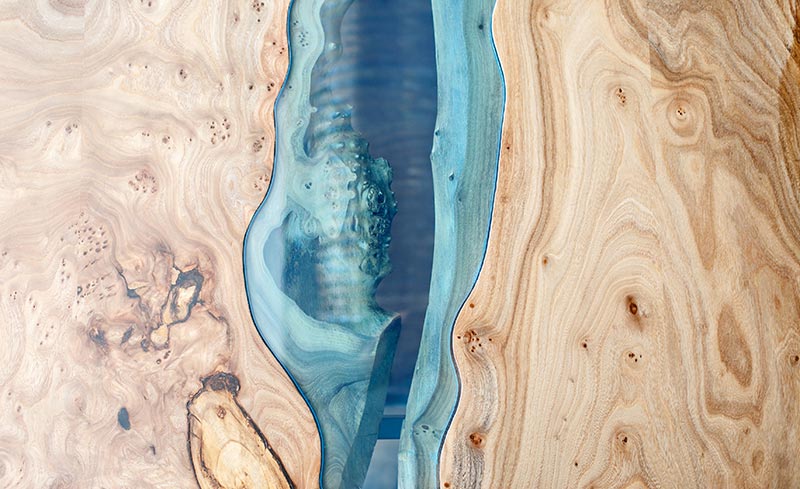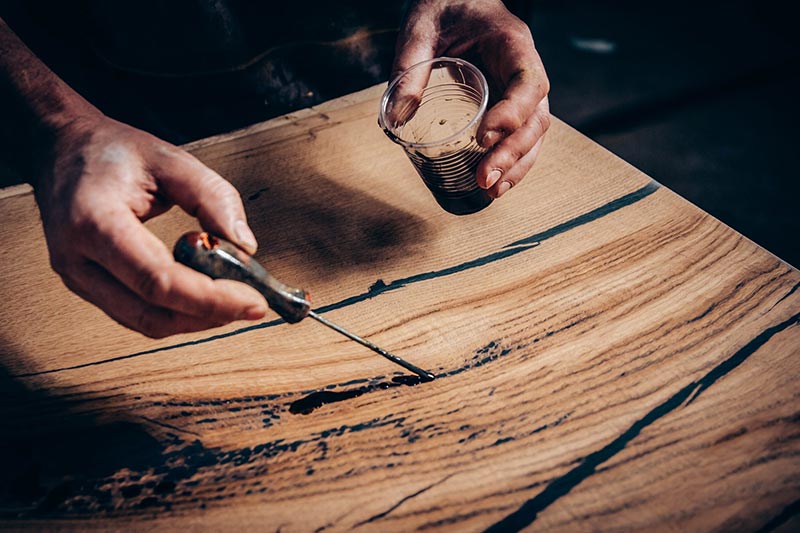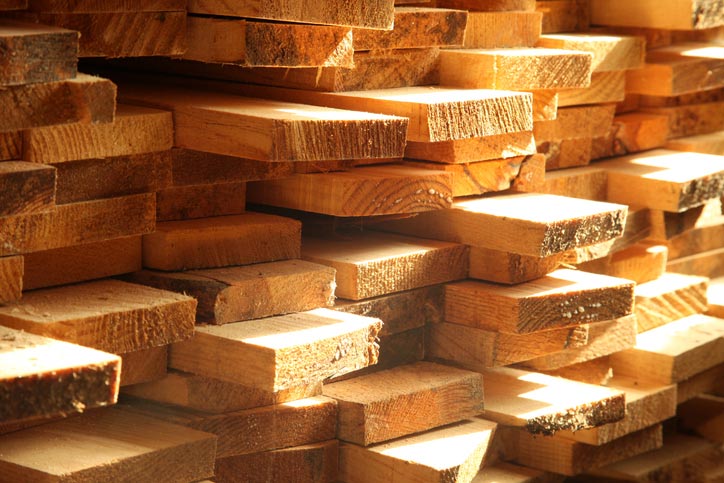
Woodworking Lingo
If you have been working with wood for a while, you know that what you call a 2×4 isn’t exactly 2 inches by 4 inches. The actual size is 1 ½ inches by 3 ½ inches.
Have you ever wondered why the board is called by one size while in actuality it is another size? It is because the wood is measured before it is dried and surfaced. When lumber dries it tends to shrink, creating a more dense and stable product. At Cardwell, we dry our lumber in a kiln, which allows us to control the process and ensure you receive the highest quality product possible.
It is also important to know that softwoods and hardwoods are marketed differently.
Softwoods are measured and spoken about in common increments like 2×4, or 1×6, but hardwoods are a different story. When working with more expensive, slow-growing hardwoods – like walnut or cherry –the industry, and ultimately, the consumer, wants to see the most yield from each tree that is cut down, so the measurements are more precise.
Hardwoods are used in specialty items like cabinetry, decorative trim, and hardwood flooring. These kinds of projects often require specific custom measurements. Because of this, hardwoods are measured more specifically than softwoods.
Hardwoods are sold in quarters, which refers to a ¼ inch thickness. So, 4/4 would be 1-inch thickness, 5/4 is 1 ¼ inch thickness, and so on. We sell most of our hardwoods in thicknesses of 4/4, 5/4, 6/4 and 8/4.
If you would like to purchase a hardwood that is exactly 2 inches thick, you would need to look at a thickness of 8/4. But realize that it will have saw marks on the faces at 2 inches. This is what we would refer to as being “rough.” In order for that piece to be completely clean and free from any processing marks, it needs to be planed on both sides, so the actual dimension will be 1-13/16 inches.
Another thing that separates hardwoods from softwoods is the fact that hardwoods are sold in random widths. The main reason for this is the difference between the hardwood and softwood forest management techniques, which allows many of the softwood species to be harvested much like row crops, all approximately the same age, size, and species. This lends itself well to automation and optimizing yield from a particular stand of timber. Hardwoods are almost always from an uneven-aged stand of timber, thus featuring a variety of diameters, lengths, and species. A skilled sawyer with many years of experience is required in order to optimize the yield on each hardwood log.
Lastly, when working with hardwoods, they are sold by volume (board feet) not nominal sizes such as 2×4 or 1×6. A board foot is 1”x12”x12”, or 144 cubic inches. So a board 1” thick, by 3” wide and 48” long will contain 1 board foot. As the thickness increases, the volume increases accordingly. The same board with a thickness of 1-½” will have a volume of 1.5 board feet.
Check out this calculator to see what your project might require.
At Cardwell Hardwoods, all of our 4/4 retail lumber is surfaced to 13/16” and has one edge that has been straightened, an industry standard that has been established by the National Hardwood Lumber Association. This thickness is intended for the final project to finish at ¾” after sanding. If your project requires a thickness other than the standard, we can accommodate that as well, but we do ask that you call and place an order in advance.
All of this might seem complicated, but what you need to know is that we want to give you exactly the right materials for your project. The more you know about hardwood lumber, the easier the process will be in getting the perfect project completed.
We love sharing what we know with our customers. If you ever have any questions, come on in and we will talk you through the process to make sure you get exactly what you need.
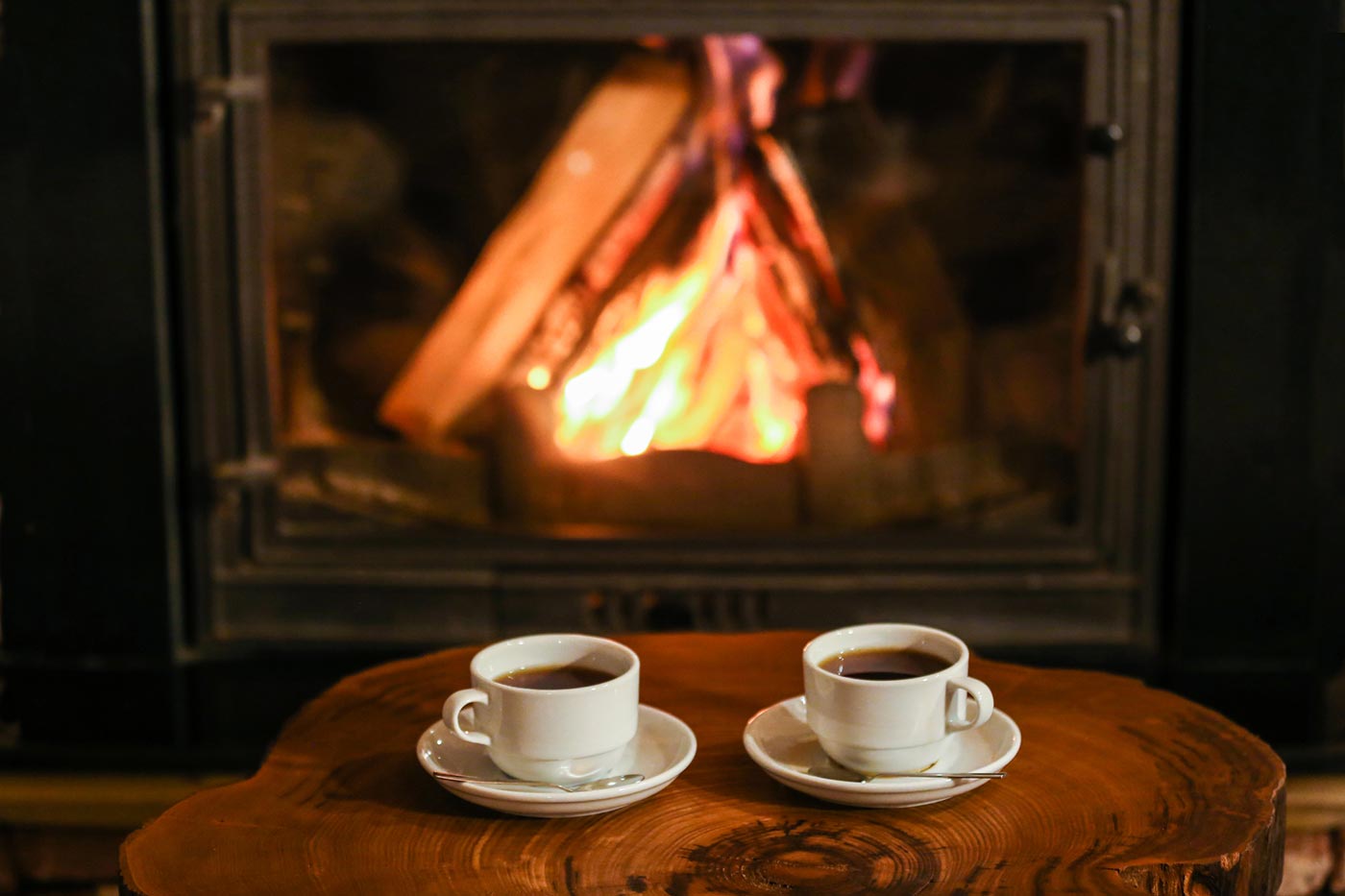
Utilizing Live Edges
You’ve seen it before. The wooden coffee table that looks like it was plucked from a forest floor and polished to a nearly reflective surface. Sturdy but curved, no one table alike. It makes a subtle centerpiece, a practical piece of art that gets daily use.
You might call it rustic or farmhouse style. You might think of it as Western. If you know the history of handmade furniture, you might say it is in the style of George Nakashima. We know it as a live edge, and we carry it in walnut, cherry, and cedar.

Are you building a home? Planning a remodel? Looking for your next DIY project? Take your idea to the next level by incorporating the natural look of a live edge. Here’s a little inspiration to get you started:
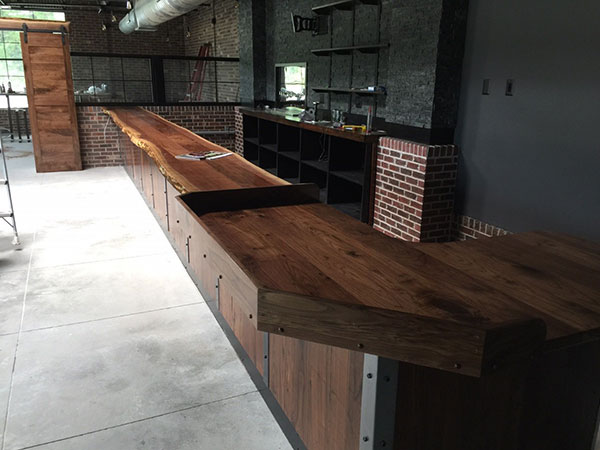
There are few natural building materials as beautiful as wood. When treated with care, the unique shape of an individual tree can bring personality into a home or commercial project.
A homemade piece of furniture is something you will treasure forever—and a table is a good beginner DIY project. If you want to step up your game even more, go the epoxy resin route. It takes a little more labor, but the results are phenomenal. A blue hue looks particularly good with the warm colors of cedar.
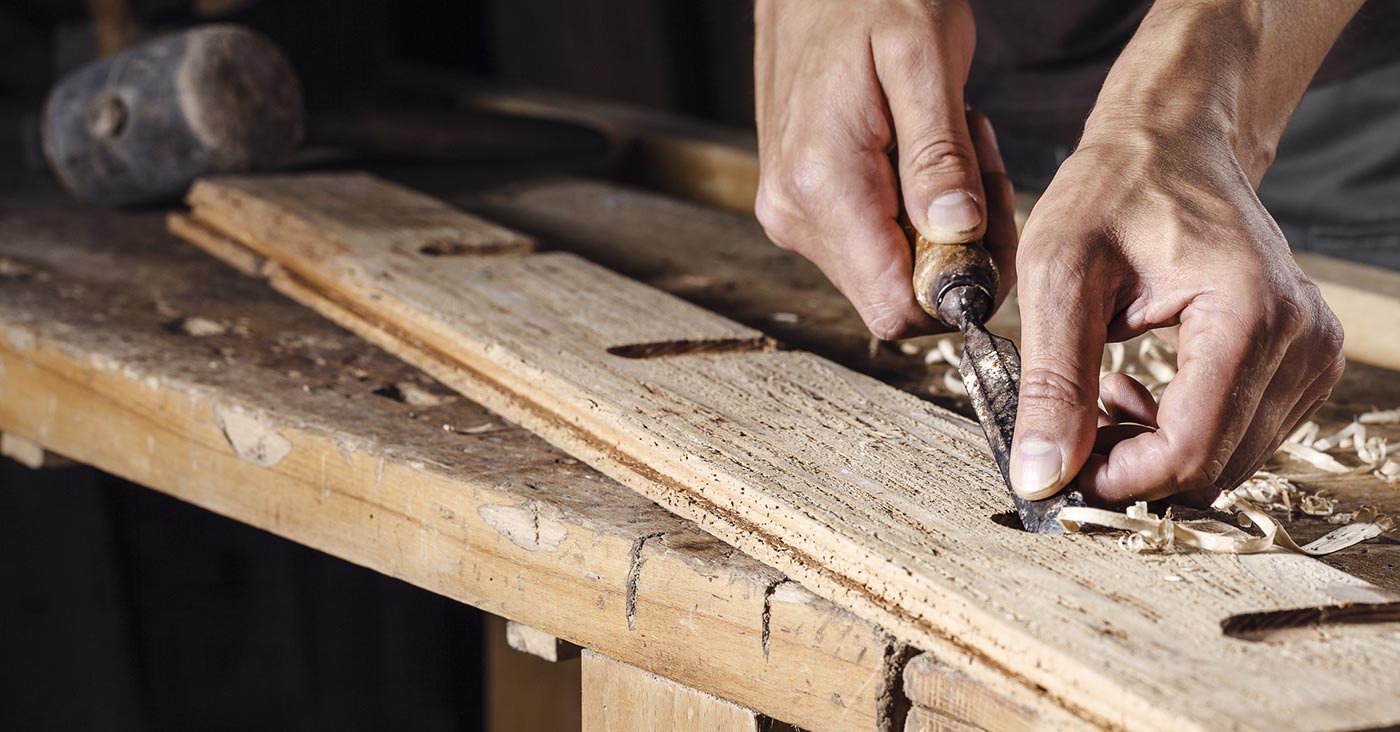
Where’s Our Wood Now?
Our favorite perk of being involved in the woodworking industry has been forming connections with all the creative minds across Missouri. There’s nothing more rewarding than brainstorming new projects, solving woodworking roadblocks, or providing that perfect piece of missing lumber for our customers’ projects.
Our passion for woodworking was why we got into this business. Having a chance to share that passion with like-minded people has been our greatest pleasure. That’s why, when we ask you to share the latest updates on your projects, we mean it. On our Facebook page, we recently asked you to do just that.
We were blown away by the responses.
You can check out the post for yourselves here. While you’re at it, be sure you like our page! In the meantime, here are a few of our favorites.
Yin-Yang Cutting Board
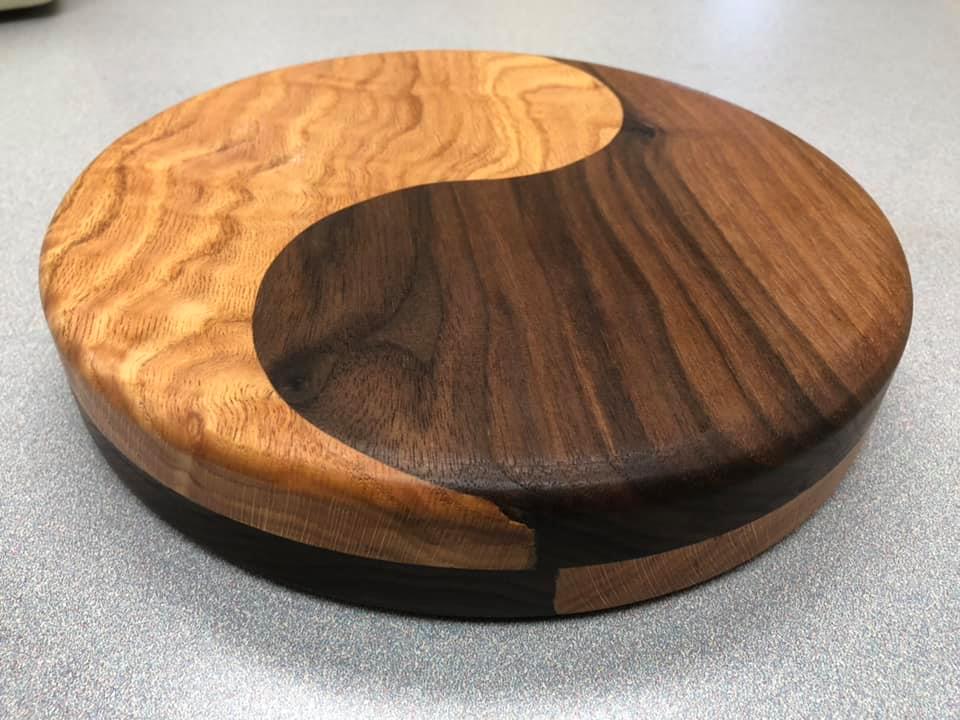
Norm Anderson is president of the Midwest Woodworkers Association, a nonprofit group that’s particularly well known for partnering with charities like Coyote Hill Christian Children’s Home. Every year they produce wooden cars and give them away to underserved children.
This particular project was dubbed the Yin-Yang Cutting Board. The board is a spinoff of the popular drunken cutting board style. Two boards of equal thickness are cut into various patterns, and those random cuts fit together like a jigsaw puzzle. In fact, all that’s needed to bind the finished product is wood glue.
“The concept is well documented,” Norm says. “I just wanted to bring some harmony to the project.”
Walnut Bed Frame
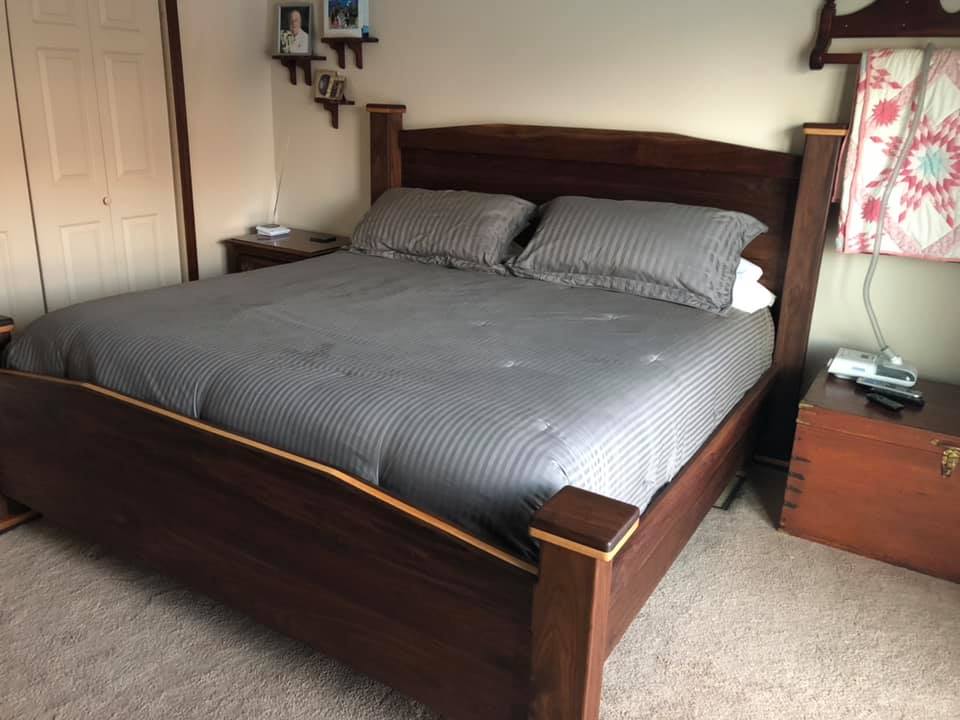
Norm Anderson also submitted this beautiful walnut bed frame. We saw Norm in the store quite a bit for this one, looking for that “one last piece.” We’re happy to say it turned out splendidly. While the majority of the wood is walnut, Norm accented his frame with strips of maple. The best part? No special hardware was required!
Memorial Plaques

Crystal Cook submitted these two memorial plaques on behalf of her husband Elwood. These plaques were donated gifts for the boy’s family.
To complete the project, Elwood used quarter-inch baltic birch purchased directly from our store. Crystal said, “Wouldn’t want to buy it anywhere else but at Cardwell Hardwoods. Great prices and awesome staff that love it when you stop in.”
First Place Finishers
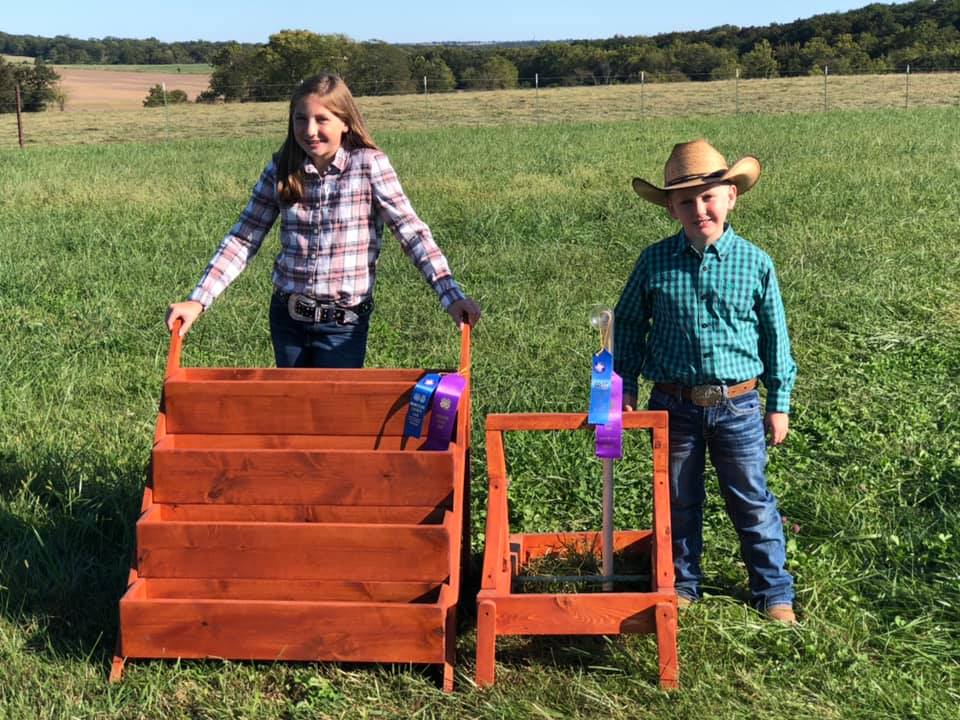
Brooke Higgins submitted this photo of her children, Kinley and Lace, standing next to their 4-H woodworking projects. We love supporting community organizations such as these, and when you meet children as talented as these siblings, it makes donating wood for their projects a no-brainer.
Both Kinley and Lace received a blue ribbon at the Moniteau County Fair and were selected to exhibit at the state fair.
Have you bought wood from us recently? We want to see what you’ve been up to! Head on over to our Facebook page and share your updates. Who knows, maybe seeing some other projects will give you the inspiration you need.

Projects for Different Wood Types
A woodworking project begins with the right selection of wood. Choosing the correct grain and quality of wood is as important for your project as having the proper tools.
First, consider what you want to make and the purpose it will have. Are you creating furniture or a cutting board?
Second, consider your budget. It is better to postpone a project in order to raise the needed funds than to substitute with lesser products.
Wondering Which Wood to Use?
We’ve selected three of our favorite domestic woods and broken them down by their temperaments and what they are best used for.
Maple:
Maple is a hardwood that is available in two subcategories: hard and soft. Both are durable and stable, and will finish well. However, hard maple can take more abuse, and will ultimately outlast its soft cousin.
Soft maple is available in a color variety of white to reddish color. Hard maple is available in a white to brown color.
We suggest that beginner woodworkers start with soft maple because hard maple is more difficult to work with, not to mention more expensive. Soft maple is more likely to be accept stains compared to hard maple, therefore soft maple will come out closer to your original concept.
Birch:
For almost a century, birch has been a hot item for furniture and cabinetry. Birch is available in a light brown to red color, and its often wavy patterns give it a desirable appearance. This affordable wood is great for higher end projects.
Even though birch is a hardwood, it works well with machines and is easy to sand due to its fine texture and straight grain.
Poplar:
While poplar is one of the softest hardwoods, it’s highly versatile. White, yellow, brown, or even green poplar are great options for smaller projects. While poplar is not known for its durability, it performs well for structural applications. Its subtle texture makes it one of the most painted woods and easy to stain.
Whether you’re a pro or hobbyist, if you use wood from Cardwell Hardwoods for your project, please share it with us on Facebook! We love seeing what our customers are creating. Inspiration can be just a click away.
Product Spotlight: Festool
Backed by meticulous German engineering, Festool has become an industry leader for superior power tool design. It’s one of Cardwell’s leading woodworking power tools. The recognizable green and white accents can be seen internationally in efficient and tidy workshops.
Festool is a quality power tool with every conceivable feature and without limitations. They push innovation forward for the entire woodworking power tool industry. Once you bring a Festool power tool home, it’s almost impossible to switch to another brand, and why would you.
Elevate Your Shop
Festool is arguably one of the best brands of professional power tools. Their slick machines have low vibration, unmatched accuracy, and a rock-solid reliability. Festool tools are also known to help keep a shop cleaner because of their features.
Each Festool tool has been engineered to work within the Festool family. The tools complement each other in workload and design to outfit an entire woodworking shop. Integrated dust collection, guide rails, and tables make a Festool workshop clean and easy to navigate.
Festool’s storage systems and mobile workshops not only make switching between projects easy, but traveling to and from jobs and between rooms is even easier. The smooth and sturdy storage boxes easily stack and lock on top of one another. Attach the storage tower to wheels for easy mobility.
Because of their engineering and technology, Festool power tools offer great long-term value, which is one of the major reasons they’re carried at our retail shop. Festool offers a three-year warranty and revered customer service.
We love this video of Tom Gensmer breaking down his experience with Festool power tools. As Tom says, being clean, tidy, and efficient leads to more referrals. At Cardwell, we love profits for our customers.
At Cardwell, we cut out the middle man by shipping most of our tools straight from the factory. This gives our customers the best price. giving the customer the best price without having a middle man to deal with.

SawStop: Benefits and Testimonials
As one of SawStop’s testimonials says, “You can’t cut
safety short.”
The Occupational Safety and Health
Administration (OSHA) estimates that the cost to a business of a single
amputation is more than $130,000 on average. These numbers do not account for
ER visits, surgeries, months or years of physical therapy, or the emotional and
physical pain of an accident.
SawStop was designed by woodworkers for
woodworkers.
The amount of regret carried by a
business owner, supervisor, or teacher knowing that they allowed those in their
care to be placed in harm’s way is immeasurable. SawStop gives supervisors
peace of mind when their back is turned or they are unable to directly
supervise.
Safety is no accident. SawStop is the
only engineered solution to reduce these tragedies to a band-aid, along with a
new brake cartridge and blade.
Safety
for Everyone
SawStop offers table saws for job sites
for contractors, industrial, and other professional users, as well as
hobbyists; making SawStop arguably the best table saw in the world.
Many
insurance companies offer discounts or other perks for using SawStop compared
to a run of the mill table saw. Contact your company’s insurance provider to
see if they offer monetary benefits for using SawStop.
When your kids are older, what type of saw do you want
them to be around? At home or at school?
SawStop saws are built to last, built to cut, and built to
protect.
SawStop’s website is full of testimonials (Link: https://www.sawstop.com/why-sawstop/testimonials) of small nicks and band-aided fingers
that could otherwise have been major life-altering injuries. SawStop has saved
thousands of fingers.
Call us
at (573) 893-2836 or visit us at 5927 Bus. Hwy 50 W in
Jefferson City to talk through how SawStop could fit into your workplace
situation.
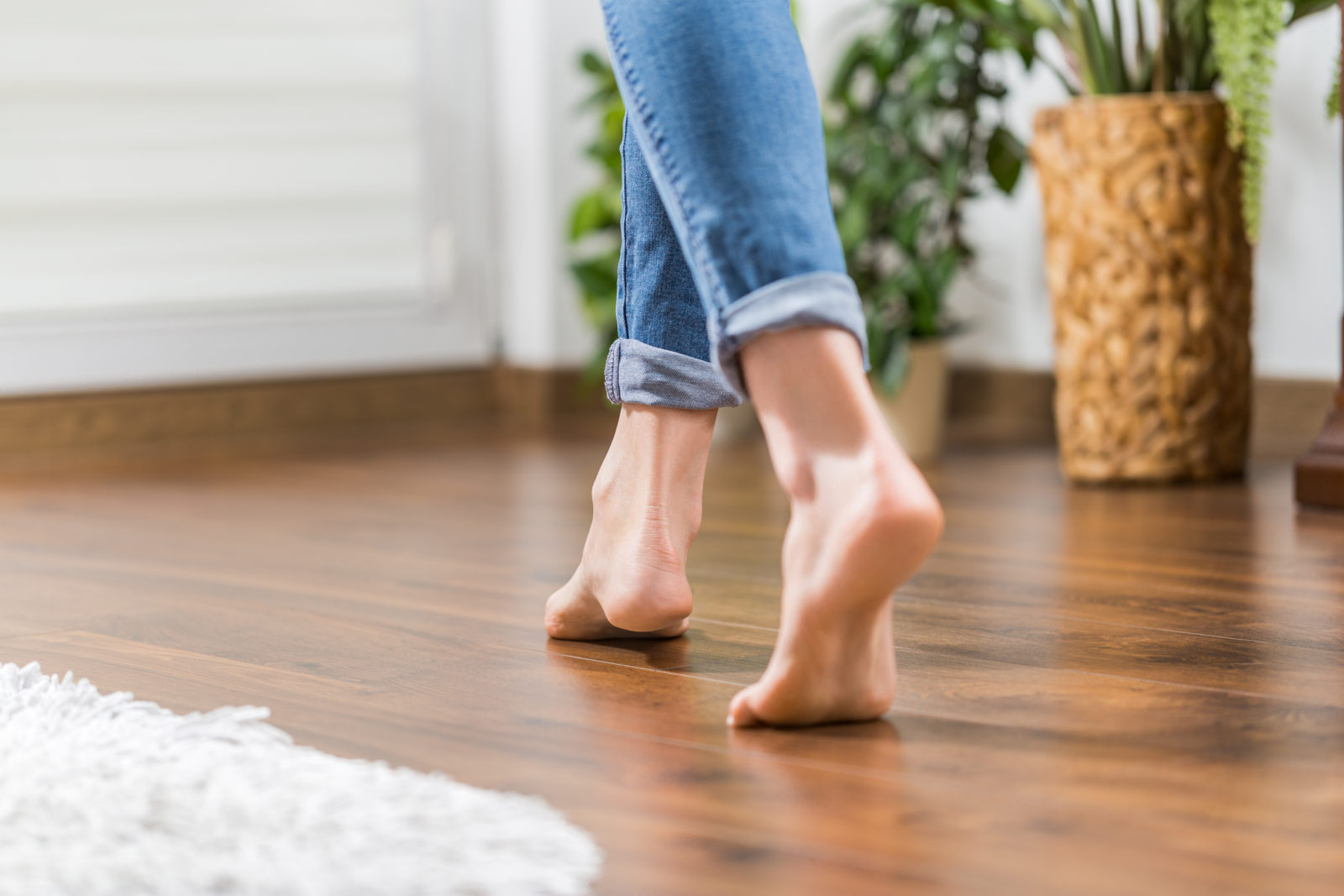
Hardwood Flooring Hardness Guide: Janka Scale
The Janka scale is used as an industry standard to measure the relative hardness of wood. The scale is prepared after the test piece of wood passes through the Janka hardness test. The scale includes hardwoods and softwoods.
What is the Janka scale?
The Janka hardness test is named after Austrian wood researcher Gabriel Janka, who invented the test in 1906.
The Janka test measures the amount of force required to embed a 1.128 cm steel ball into a piece of wood to half of its diameter. The test was standardized by the American Society for Testing and Materials in the early 1970s.
The scale runs from softest woods, which start at zero, to the hardest woods, which can go up to 4,000. Woods with a lower rating are most prone to dents and scratches. As a natural product, a hardwood’s hardness is most impacted by its wood species.
Does hardwood hardness matter?
A Janka scale rating of 950 or higher is the standard for wood flooring options. Wood used for decks and furniture, where durability is vital, usually have a rating over 3,000. If you own a pet or have small children, a wood higher on the Janka scale is suggested for use throughout your home.
To give an idea of Janka scale results, here are some examples of wood species Cardwell Hardwoods uses:
● Red Oak: 1,220
● White Oak: 1,290
● Hard Maple: 1,450
● Hickory: 1,820
The Janka scale is an excellent way to determine what wood species may work for your flooring. However, there are other factors to consider such as wood grain, type of finish, and the sun’s effect on your flooring.
When properly installed and finished, most hardwoods and many softwoods can withstand normal floor use. But no matter what their score on the Janka scale, any wood will dent with a harsh impact.

